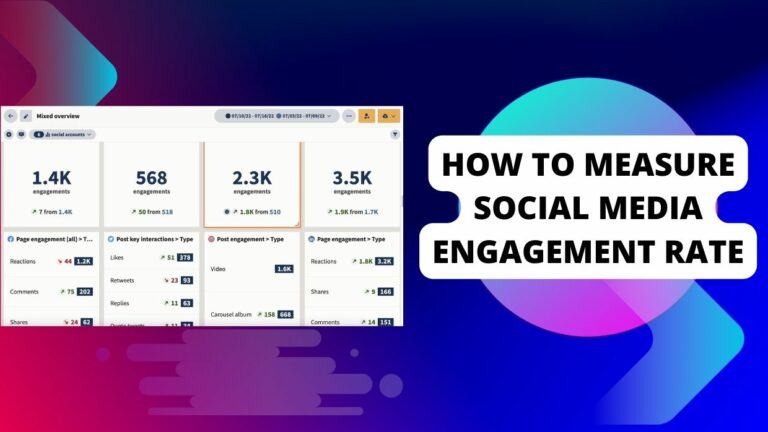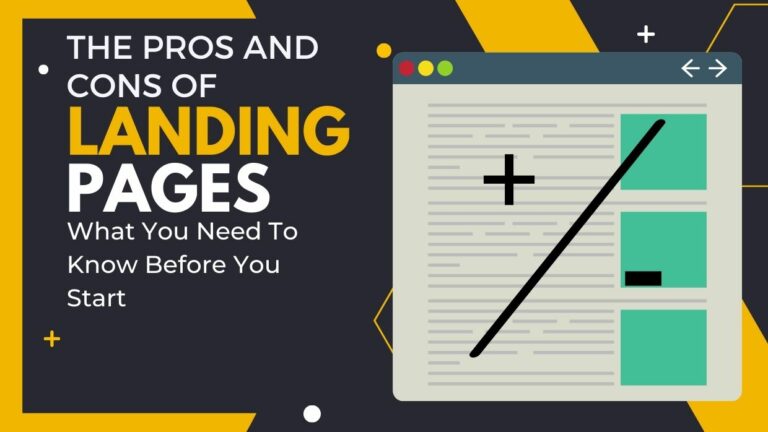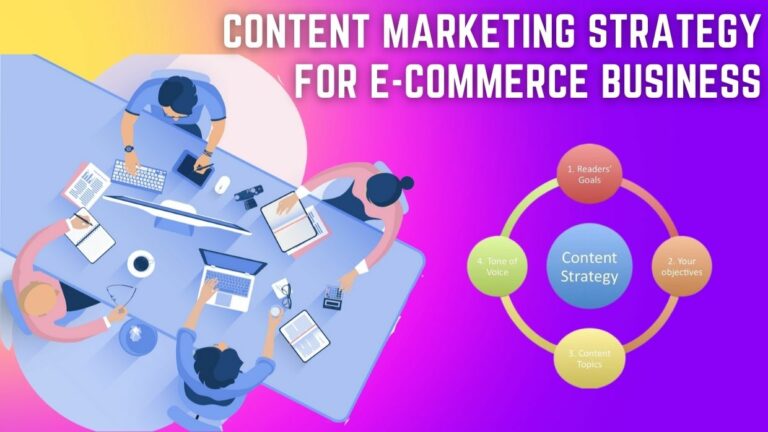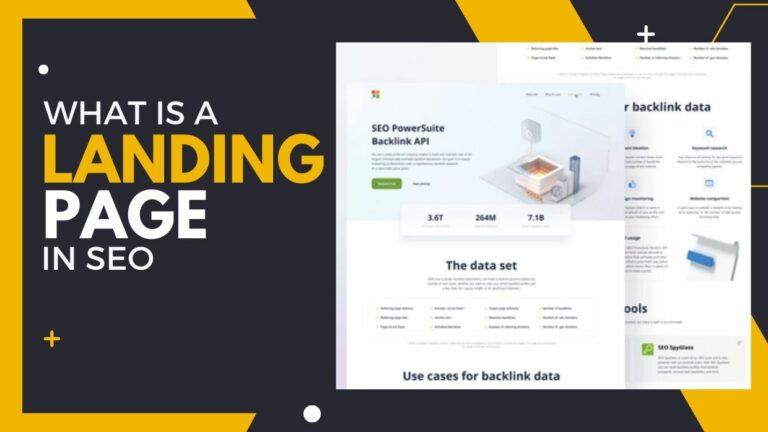How to Create a Website for E-commerce
“How to Create a Website for E-commerce” Are you ready to take your business online and tap into the world of e-commerce? Whether you’re a seasoned entrepreneur or just starting out, having an online store can help expand your reach and increase sales. However, creating a website for e-commerce can seem like a daunting task – from choosing the right platform to designing an attractive layout that converts visitors into customers. Don’t worry! In this post, we’ll guide you through the steps of building an effective e-commerce website that drives traffic and boosts revenue. So, let’s get started on turning your dream of having a successful online store into reality!
Overview of E-commerce
E-commerce, or electronic commerce, is the buying and selling of goods and services online. It covers a wide range of businesses, from small, family-run shops to huge multinational companies.
There are several types of e-commerce: business-to-consumer (B2C), business-to-business (B2B), consumer-to-consumer (C2C), and mobile commerce (m-commerce). B2C is the most common type; it involves businesses selling products to consumers through an online store.
B2B encompasses all other types of transactions between businesses, such as wholesalers selling to retailers or manufacturers selling to distributors. C2C occurs when consumers sell directly to each other, such as on auction sites like eBay. Finally, eCommerce refers to any type of transaction that takes place on a mobile device, such as a smartphone or tablet.
setting up an e-commerce website is a great way to reach a larger audience for your business. It can be done relatively easily and cheaply, especially if you use one of the many eCommerce platforms available today. Before you get started, though, there are a few things you need to know.
First, you need to choose the right platform for your website. There are many different options available, so take some time to research your options and find the one that best suits your needs. Once you’ve chosen a platform, you’ll need to set up your website.
This includes designing and building the site, choosing payment processors, integrating shipping solutions, setting up customer service tools like a contact form or live chat, and more. Finally, you’ll need to market your website and make sure it’s easy for customers to find it. This can include search engine optimization (SEO), pay-per-click (PPC) campaigns, social media marketing, and other strategies.
Read more… What are The Common E-commerce Mistakes
Setting up Your Website

If you’re planning on setting up an e-commerce website, there are a few things you’ll need to take into account. First and foremost, you’ll need to choose a domain name for your website. Once you’ve done that, you’ll need to find a web hosting service that can host your website. After that, you’ll need to design your website.
There are a few different ways to go about designing your e-commerce website. You can either hire a web designer to create a custom design for you, or you can use a pre-made theme. If you’re on a budget, there are also many free and premium WordPress themes that you can use.
Once you’ve designed your website, the next step is to add your products. If you’re selling physical products, you’ll need to add product photos and descriptions. If you’re selling digital products, you’ll need to upload the files and add descriptions as well. Once you’ve added all of your products, the next step is to set up payment processing.
There are many different options for payment processing, but the most popular ones are PayPal and Stripe. Once you’ve set up payment processing, the final step is to launch your website!
Selecting Your Domain Name
A domain name is the web address where your customers will find your online store. It’s important to choose a name that is short, easy to remember, and reflects what you sell. Here are a few tips for selecting the perfect domain name for your e-commerce website:
- Keep it short and sweet. A shorter domain name is easier for customers to remember when they’re trying to find your website.
- Make it relevant to what you sell. If your domain name includes keywords related to your business, it will be easier for customers to find you in search engines.
- Avoid using hyphens or numbers. These can make your domain name difficult to remember and harder to type correctly.
- Check availability on social media sites. Once you’ve selected a domain name, make sure it’s available as a username on popular social media sites like Facebook, Twitter, and Instagram. This will help customers connect with you online and promote your brand across multiple platforms.
Choosing the Right Hosting Provider
There are many things to consider when choosing a hosting provider for your e-commerce website. The most important factor is reliability; your site needs to be up and running at all times in order to make sales. Other factors include price, features, customer support, and scalability.
When narrowing down your choices, start by looking at the most popular providers. Once you’ve found a few that meet your needs, read online reviews to get a sense of what other customers have experienced. Finally, sign up for a free trial or test account with each provider to get a feel for their platform and see if it’s the right fit for you.
Designing and Building Your Site
Designing and building your e-commerce website can feel like a daunting task, but it doesn’t have to be. By planning your design and keeping your user’s needs in mind, you can create a beautiful and effective website that will help you sell your products or services online.
Here are a few things to consider when designing and building your e-commerce website:
User experience: Your website should be easy to use and navigate so that users can find what they’re looking for quickly and easily. Use clear and concise text, well-designed menus, and helpful product descriptions to make it easy for users to find what they need on your site.
Mobile-friendly: In today’s mobile world, it’s important to make sure your website is responsive and can be viewed on all devices. More and more people are doing their shopping on smartphones and tablets, so you don’t want to lose potential customers because they can’t view your site properly on their devices.
Security: When selling products or services online, security is essential. Make sure your website is secure by using an SSL certificate and that all of your payment options are PCI compliant. This will give customers peace of mind when making a purchase on your site.
Search engine optimization: If you want customers to be able to find your site easily, you need to make sure it’s optimized for search engines. Use relevant keywords throughout your site and in your product descriptions to help search engines find your site.
Shopping cart: Your website needs to have an easy-to-use shopping cart so that customers can add items to their cart and check out quickly and easily. Make sure the checkout process is secure and that customers don’t have to re-enter their information more than once.
Building an e-commerce website doesn’t have to be intimidating. With careful planning and attention to detail, you can create a beautiful and effective website that will help you reach more customers and increase sales.
Adding Payment Processing Options
Adding payment processing options to your e-commerce website is a critical step in setting up your business for success. There are many different ways to process payments, and the right solution for your business will depend on your specific needs. We’ve compiled a list of the most popular payment processing options to help you get started.
Credit Cards: Credit cards are the most common form of online payment, and most customers expect to be able to pay with their credit card when shopping online. If you plan to accept credit cards, you’ll need to set up a merchant account with a bank or other financial institution. There are also a number of third-party processors that can handle credit card transactions for you.
PayPal: PayPal is one of the most popular payment processors, and it offers a number of benefits for both buyers and sellers. PayPal is easy to use and offers buyer protection, making it a good choice for customers who are concerned about security. For sellers, PayPal is low-cost and convenient, and it integrates easily with most e-commerce platforms.
Bitcoin: Bitcoin is a decentralized digital currency that can be used for online payments. Bitcoin payments are processed through a network of computers that verify each transaction, eliminating the need for a third-party processor. Bitcoin transactions are also fast and secure, making it an attractive option for businesses that need to Process payments quickly and securely.
Optimizing for Mobile Shopping Experiences
When creating a website for e-commerce, it is important to optimize the mobile shopping experience. This can be done by ensuring that the website is responsive and easy to navigate on mobile devices. Additionally, the checkout process should be streamlined and efficient on mobile devices. Here are some tips for optimizing the mobile shopping experience on your website:
- Make sure your website is responsive so it looks good on all screen sizes.
- Use large, easy-to-tap buttons for navigation.
- Minimize the number of steps in the checkout process.
- Offer guest checkout to make it quick and easy for customers to purchase items without creating an account.
- Use autofill features to save time during checkout.
- Send purchase confirmations and shipping updates via text message to keep customers informed about their order status.
Creating Content and Promoting Your Site
Creating content for your e-commerce website is essential to driving traffic and converting visitors into customers. There are a few things to keep in mind when creating content for your site:
- Write RELEVANT and keyword-rich content.
- Make sure your content is well-written and free of errors.
- Use images, infographics, and videos to break up your text and add visual interest.
- Promote your content across social media and other channels.
- Regularly update your website with fresh content to keep people coming back.
Creating great content is the first step to driving traffic to your e-commerce website, but you also need to promote that content to get people to actually see it. The good news is, there are plenty of ways to promote your content for free or very little cost. Here are a few ideas:
- Social media – Share your content on social media sites like Facebook, Twitter, Instagram, etc.
- Email marketing – Include links to your articles in your email newsletters or other emails you send out.
- Guest blogging – Reach out to other bloggers in your niche and offer to write a guest blog post for their site (be sure to include a link back to your own site).
- Forum postings – Find relevant online forums where you can share links to your articles (again, be sure to include a link back).
Optimizing for Search Engines
If you want your e-commerce website to be successful, you need to make sure it’s optimized for search engines. Here are some tips:
- Use keyword-rich titles and descriptions. This will help your site show up in relevant searches.
- Use high-quality images and videos. This will help your site stand out in the search results.
- Make sure your website is mobile-friendly. More and more people are using their smartphones to search for products online, so you need to make sure your site can be viewed on a small screen.
- Use social media to promote your website. Create profiles on popular platforms like Facebook, Twitter, and Instagram, and share links to your website’s content.
- Make sure your website’s content is fresh and up-to-date. Search engines favor websites that regularly publish new content over those that don’t update their sites often.
Read more…E-Commerce Marketing Strategies For Maximum Results
Conclusion
Creating a website for e-commerce is not a daunting task, as long as you have the right tools and resources. With the help of a web hosting platform, an SSL certificate, and some basic coding knowledge, anyone can create an online store that stands out from the competition. Keep in mind that it will take time to find the perfect template and design your site; however, with some patience and dedication, you should be able to build a successful e-commerce website. Good luck!







